GMS Field Trip
If you have any questions about field trips send email to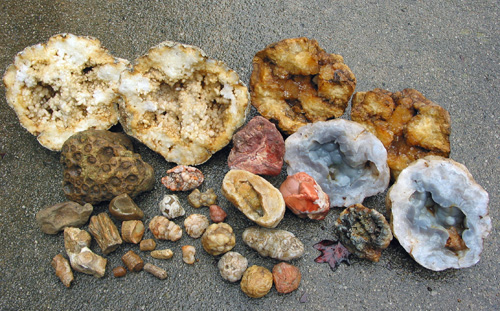
Geodes, fossils, and beekite
GMS Field Trip
Geodes in Kentucky
Saturday, September 26, 2015
Kentucky is well known for the quantity and quality of the geodes that can be found there. The geodes have fairly thick, heavy rinds and the interiors are usually lined with quartz crystals or botryoidal chalcedony. Occasionally a geode with very pale amethyst can be found. During the joint Knoxville and GMS field trip in September, attendees got as many geodes as they wanted. Recent rains liberated a plethora of geodes from the banks, so gravel bars were loaded.
Pretty much everyone found geodes full of drusy (alt spelling druzy) to large quartz crystals as well as cubic quartz and botryoidal quartz. Some of the geodes also contained loose, double terminated quartz crystals that we had to remember to capture when we cracked open one of those beauties. Daniel Miller, Knoxville Gem & Mineral Society field trip chair, brought his geode cracker and popped open geodes for everyone.
In addition to geodes, many members found fossils such as colonial corals, horn corals, crinoid stems, shell impressions, bryozoans, and various trace fossils too.
We were also finding strange nodules with what appear to be “beekite” rings. Beekite rings are fine, concentric bands of silica that tend to be only on the surface of a specimen. It seems the structures are still a bit of a mystery, as I can find little modern literature about them. They were once thought to be a silica replacement of coral or shell, though other studies indicate they are simply a form of chalcedony. Members were finding a similarly odd chalcedony formation in the area -- rocks with round, blobby, concentric chalcedony. These weird little things are lumpier than the others so they seem like a different thing, but I think they are considered to be beekite too.
A local GMS member very graciously invited members to view his collection at his house. He also volunteered to take people to visit a museum nearby to see more collections. People who went reported his collection is spectacular and the museum is definitely worth a visit.
Despite a little drizzle that morning, it was a super fun trip. We owe a huge debt of gratitude to the property owners who allowed us access to the collecting site, Daniel Miller (Knoxville field trip chair) and Charles Carter (GMS field trip chair) for arranging the trip, as well as our local GMS member who added an unexpected treat to the trip!
P.S. Charles will be doing a presentation about cleaning quartz at the November general meeting. Come learn some simple techniques then use them to clean your field trip finds!
Lori Carter
On behalf of Charles Carter, GMS Field Trip Chair
e-mail:
Photo by Lori Carter
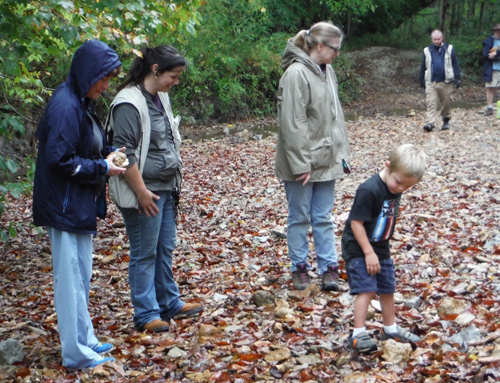
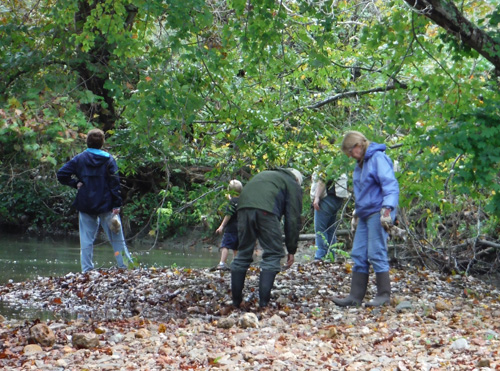
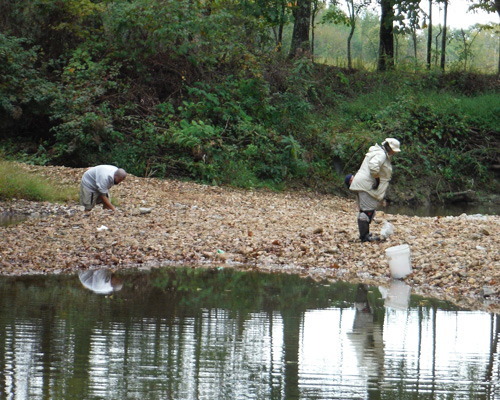
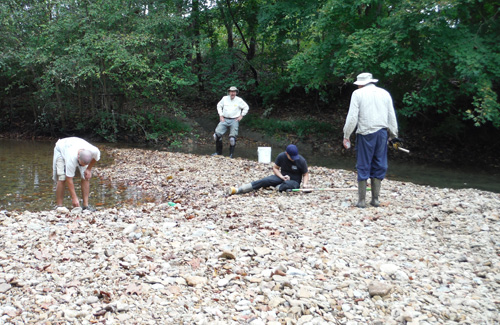
The gravel bars were huge so there was plenty of room for everyone
Photo by Lori Carter
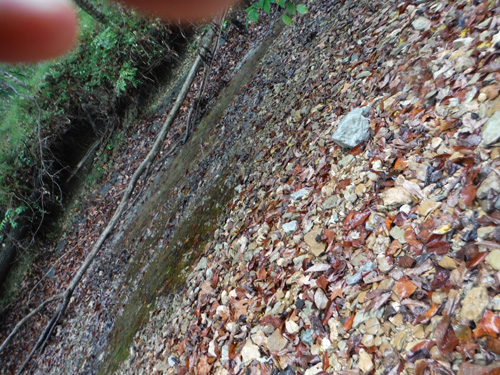
This is what happens when your finger is on the shutter release when you are moving your camera around
Photo by Lori Carter
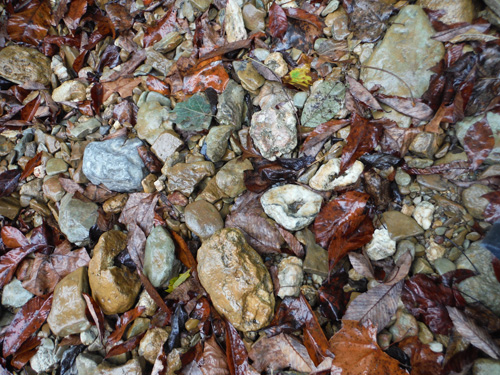
There were geodes everywhere and the fallen leaves were so pretty
Geodes
Photo by Lori Carter
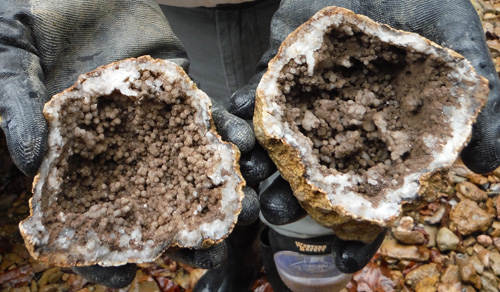
This geode has just been cracked. It contains small balls of quartz crystals that are coated
with a dark mineral, probably manganese, that can be cleaned off easily.
Photo by Lori Carter
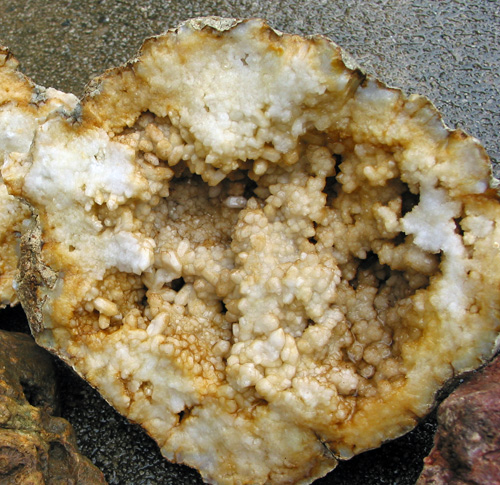
This geode has double terminated quartz crystals lining it
Photo by Lori Carter
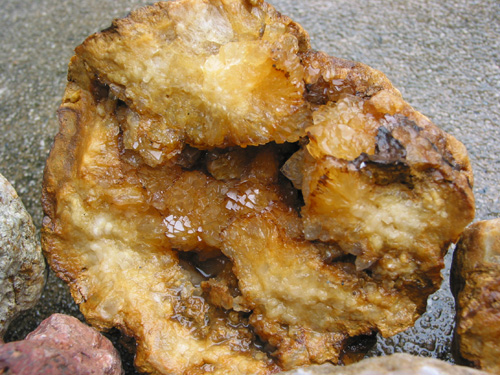
The quartz crystals in this geode grew all over each other
Photo by Lori Carter
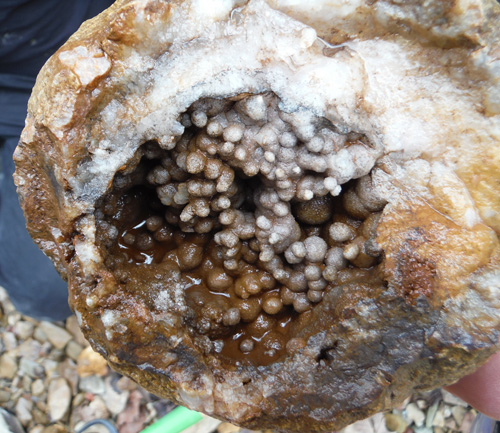
This geode is an oddball mix of druzy quartz on and around botryoidal chalcedony
Photo by Lori Carter
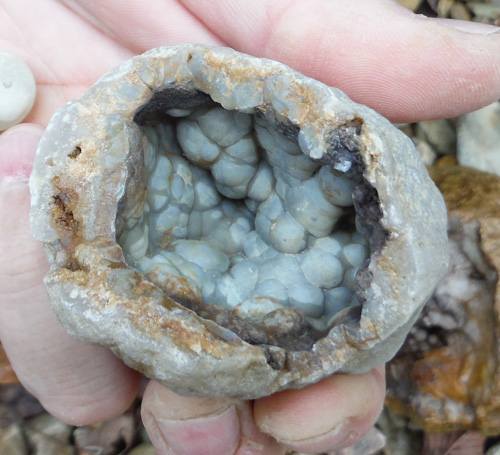
Classic botryoidal chalcedony
Photo by Lori Carter
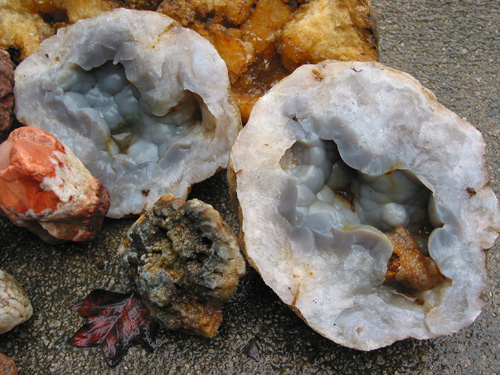
More botryoidal chalcedony geodes
Fossils
Photo by Lori Carter
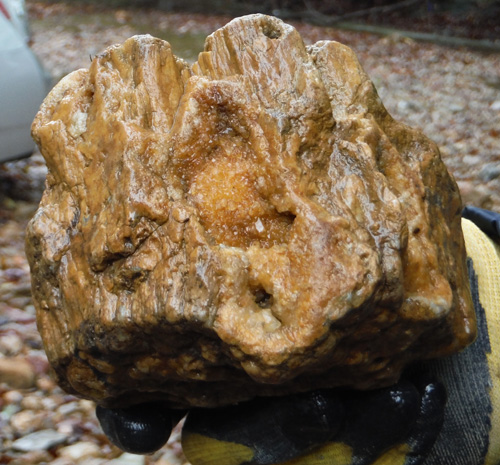
Mickey McClain found this coral with protruding quartz crystals
Photo by Lori Carter

An enormous horn coral!
Photo by Lori Carter
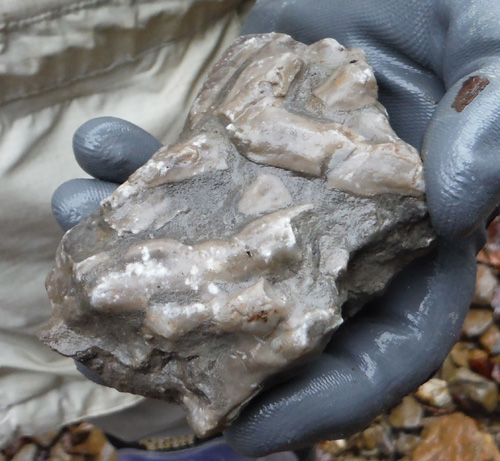
Bryozoan in limestone matrix
Photo by Lori Carter
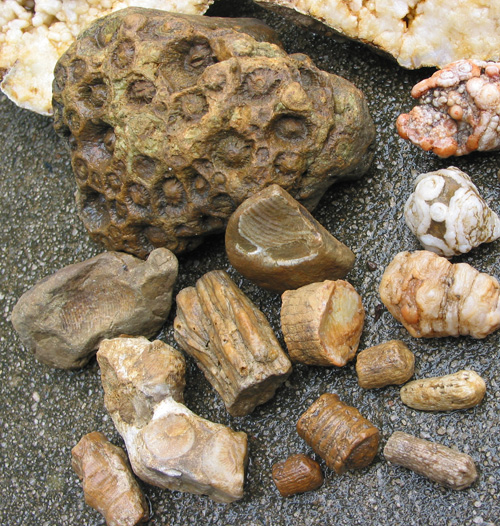
(Top) A colonial coral with shell impressions propped against it.
The cylindrical fossils with vertical striations are horn corals. There are more horn corals in matrix at 7 o'clock.
The dark brown cylinder with horizontal striations at 5 o'clock is a crinoid stem
The fossil in the center with tiny holes visible is another kind of coral.
The weird things in the upper right are in other photos and explained below.
Beekite
Photo by Lori Carter
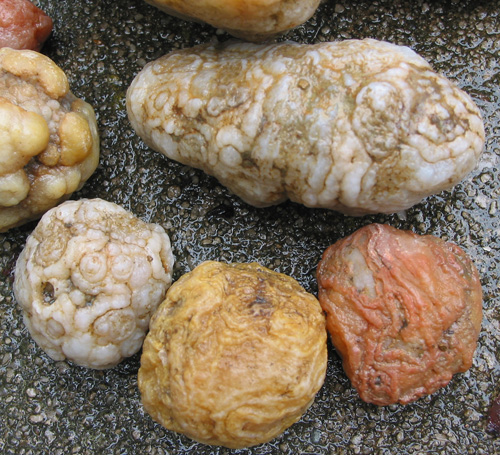
Beekite rings are concentric circles of chalcedony
These examples have thin rings that wander and look a little bit like brains
Photo by Lori Carter
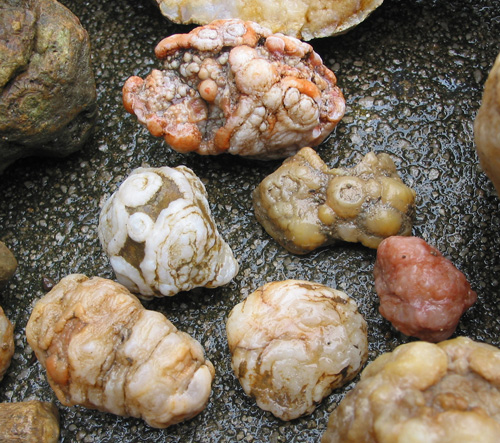
These beekite examples have thicker, more blobby rings
Photo by Lori Carter
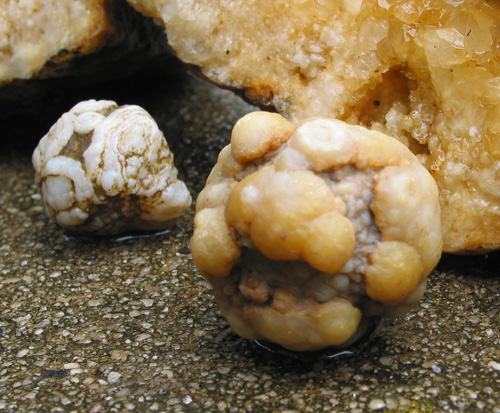
The specimen on the left is beekite, the one on the right appears to be beekite too, just not a classic example
Photo by Lori Carter
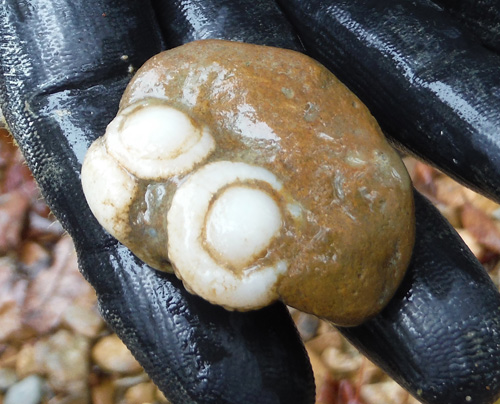
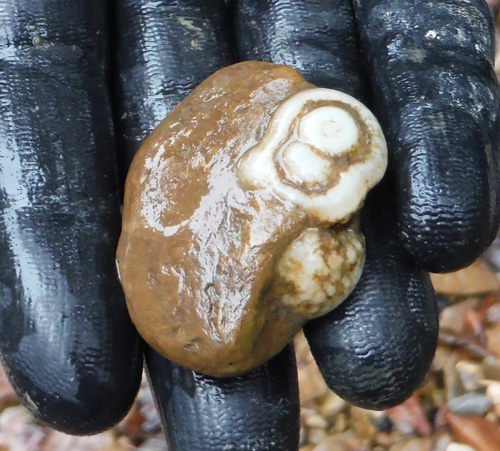
A nice beekite example with contrasting matrix
Photo by Lori Carter
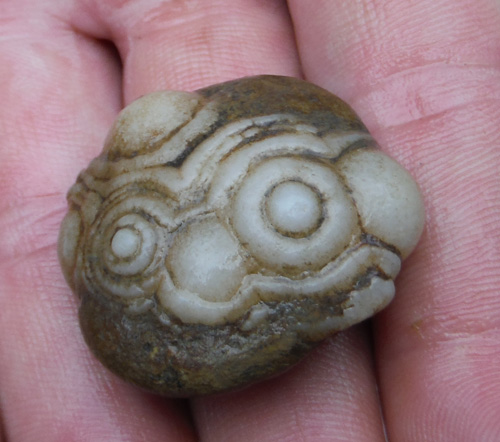
Beekite with thick rings and excellent contrast
Other Finds
Photo by Lori Carter

Lizabeth McClain found this beautiful chunk of red/orange, botryoidal chalcedony
Photo by Lori Carter

Mickey McClain found this agate!
Photo by Lori Carter
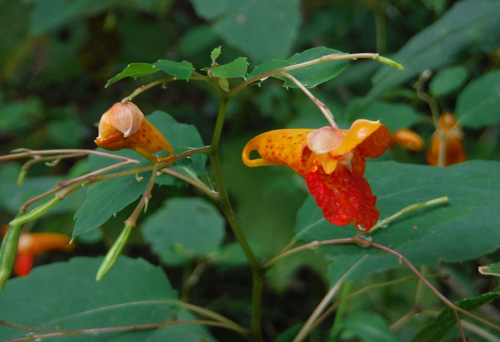
Jewelweed stems and leaves can be used to treat itchy skin caused by poison ivy or insect stings
Photo by Lori Carter
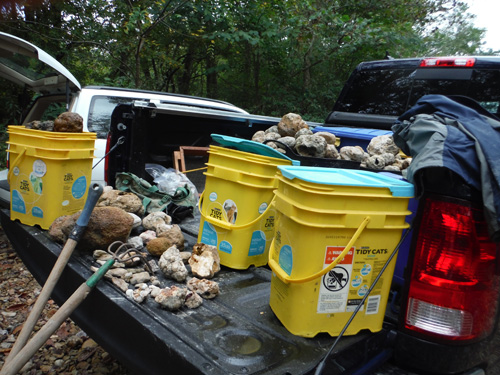
Wow! All of that for schools and they weren't even done collecting yet!
Click below for field trip policies

Copyright © Georgia Mineral Society, Inc.
